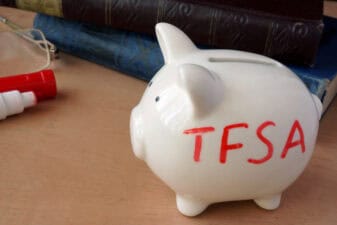If there’s one emotion to describe how homebuyers have felt this year, the proper word would be angst. Yes, whether its angst over short supplies or angst over potential mortgage rate hikes (which, yes, are coming), it seems like not owning a home has become an existential crisis, something that has catapulted many people, afraid of prices going up higher, into a housing market that’s on the brink of collapse.
Notwithstanding the many warnings from experts, including the Bank of Canada itself, that buying right now might not be the smartest financial decision you’ll ever make, homebuyers seem undeterred in their quest to secure a home before 2021 is over.
While some homebuyers probably shouldn’t be looking for a home right now, others definitely shouldn’t. Who are they? In short, if you fall into any (or all) of these categories, you should wait until the housing market is more opportune before house hunting.
1. Your job isn’t steady
Your home is likely going to be the most expensive thing you ever buy. Period. In order to make those mortgage payments, not to mention secure a mortgage in the first place, you’ll need a stable income. Perhaps even a job that’s employed you for a few years or more.
Now, of course, that doesn’t mean you can’t be self-employed or freelancing. It just means you have the bank statements proving you have a steady stream of income.
If you’re receiving a “gift” from your parents, like a substantial down payment, but you don’t have the income stream to back it up, you’re not in the position to buy a house. Stabilize your career first, before you launch yourself into home ownership.
2. You have only the minimum downpayment
Your downpayment must be at least 5% on homes that are valued at $500,000 or less, and another 10% on any value above $500,000 (but below $1 million). If you’re looking for a home that’s a million or more, you’ll need a full 20% down payment to even get your foot in the door.
For instance, if you’re looking to buy a $750,000 home, you’ll have to put at least 5% on the first $500,000 (or $25,000), with another 10% on the remaining $250,000 (another $25,000) for a total of $50,000.
But here’s the thing: if you just meet the legal minimum, you’re only putting down 6.6% of the $750,000 value. That will require you to buy mortgage default insurance, which can be around 2.8% to 4% of your mortgage amount. Depending on how much mortgage you’re borrowing, as well as the size of your down payment, that can get expensive fast.
So, if you have only the minimum downpayment, I would consider twice if you should buy a home right now. The more down payment you have, the less you’ll pay in CMHC insurance. With a full 20% down payment, you’ll avoid it altogether.
3. Your credit score is “meh”
When you apply for a mortgage, lenders will use your credit score to determine your risk. A high score means you pay your bills on time, and you’ll likely get a more favourable mortgage rate because of it. A low score, however, could mean you represent more risk, and you could pay more in mortgage payments or worse — get rejected.
While not every lender will look for the same minimum credit score, most of the time a minimum score of 600 to 650 will land you in the “good” range. But just know — the lower your score, the less likely you’ll get the best mortgage rates at the time. If your score is just above what a lender accepts, you’ll likely get a higher than average mortgage rate.
For those whose credit scores are suffering, consider getting a credit card that will help you strengthen your score. As long as you pay off what you charge, and you don’t make late payments or charge too much, you should see a steady increase in your score.
4. You have personal debt
Finally, you probably shouldn’t be looking for a home if you’re saddled with personal debt. Instead, you should use whatever money you’re saving for your downpayment to pay off what you owe, especially if it’s high-interest debt, like personal loans or credits cards. You’ll likely save more money in the long run by paying off your debts now, rather than taking out more debt and trying to pay them all off at once.


